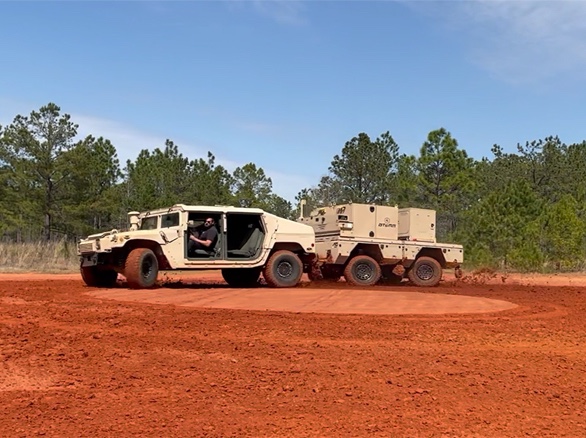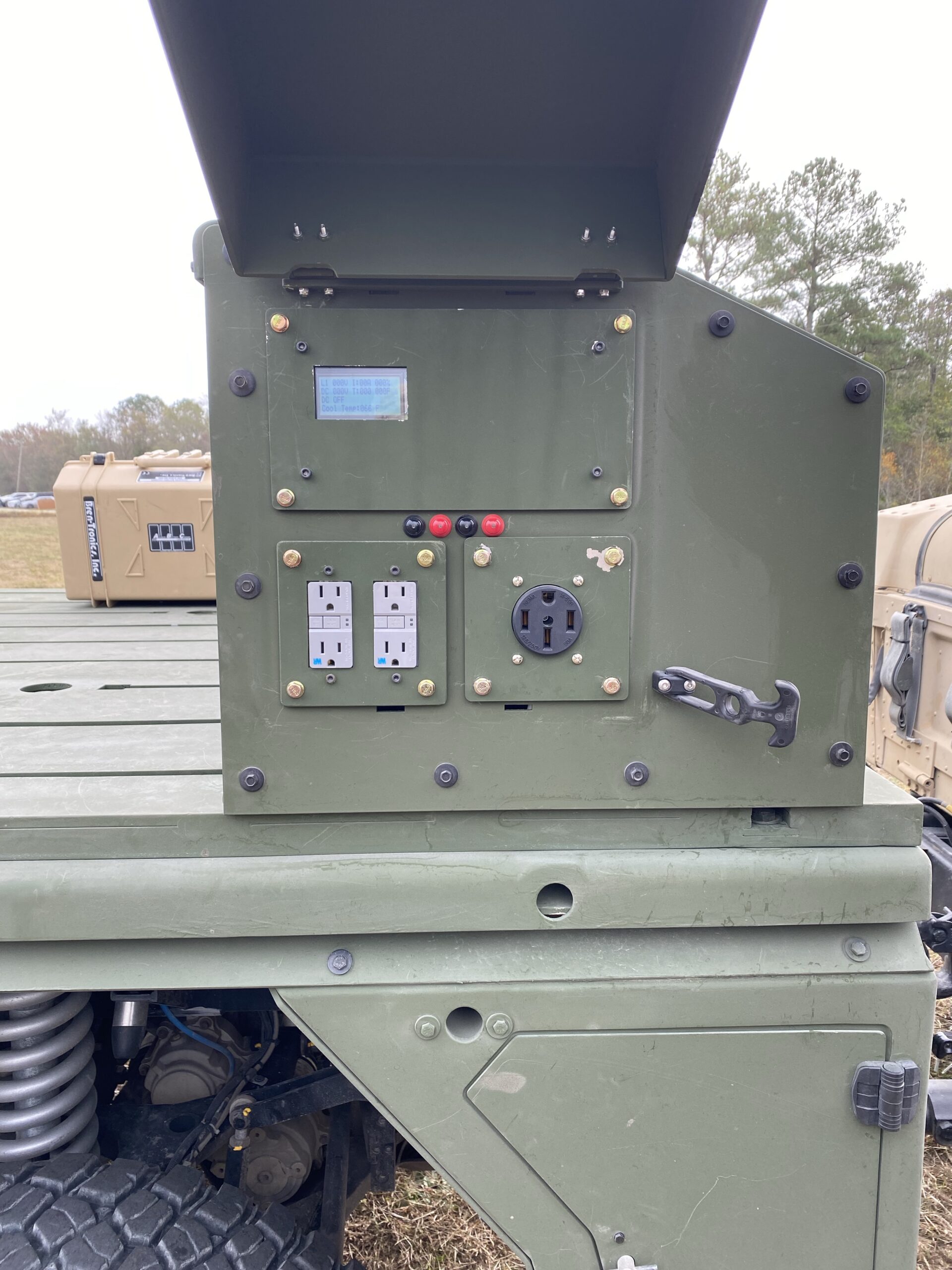During the recent Modern Warfare Week demo day at the Range Complex near Fort Bragg, I had the opportunity to see the All-Terrain electric Mission Module (pronounced Atom) from Plasan North America.

At first glance it’s a trailer. But it also incorporates a 47kWh Li-Iron Battery Pack. Additionally, the system is modular allowing the addition of mission payloads including weapons. ATeMM can be synchronized with the lead vehicle and this system also means it can be remotely operated.

When combined with a lead vehicle, the platform performs as an 8×8. ATeMM’s wheels track with any turns conducted by the lead vehicle which helps keep turns radiuses tight.

Not only can it add propulsion to any vehicle it’s attached to, but it can either propel that vehicle on its own or be charged while being towed by the other vehicle via regenerative braking and coast regeneration. It turns legacy vehicles like the HMMWV, ISV, and GMV 1.1 into hybrids without having to buy completely new systems. Those vehicles can also be moved in silent mode if propelled by ATeMM.

Since ATeMM is also a large battery, it can be used to power a wide variety of systems. As the Army looks more and more toward highly mobile command posts, this offers a way silently power them.
Because it does so many things ATeMM defies categorization. In fact, it’s an issue that the Army’s acquisition system is facing. ATeMM has been used in several experiments and is exactly the kind of multi-use gear that Cross Functional Teams love but when it comes to who would write a requirement and which Program Executive Office would be responsible is where things become fuzzy.
ATeMM looks to be a great options, but may be too generalized for a requirements generation process that seeks out highly specialized capability.

